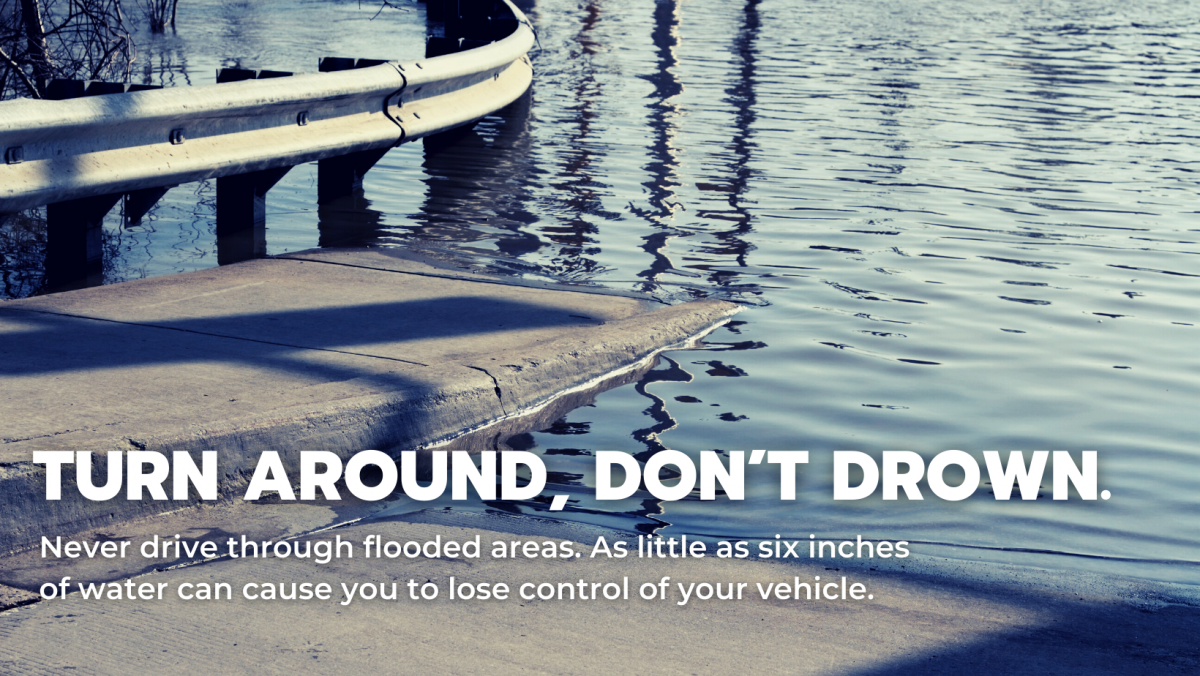Flood Safety

Quick Links:
- Current Flood Risk Information
- Preparing for a Flood
- Staying Safe During a Flood
- Staying Safe After a Flood
- Flood Recovery Resources & Information
Floods, big or small, can have devastating effects on your home and your family. You can take steps to reduce the harm caused by flooding. Learn how to prepare for a flood, stay safe during a flood, and protect your health when you return home after a flood.
Current Flood Risk Information
There are no current flood risks.
For information on local road closures, visit www.atxfloods.com.
For updates on weather, visit www.weather.gov.
Preparing for a Flood
Keep Yourself, Your Loved Ones and Neighborhood Safe by Planning Ahead:
- Know the types of flood risk in your area. Visit FEMA’s Flood Map Service Center for information.
- Make a communication plan and a disaster plan for your family. Plan and practice a flood evacuation route with your family. Ask an out-of-area relative or friend to be the “family contact” in case your family is separated during an emergency. Make sure everyone in your family knows the name, address, and phone number of this contact person.
- Create an emergency supply kit by gathering supplies, including non-perishable foods and water for several days, flashlights and extra batteries, a battery-powered and/or hand-crank radio in case power goes out, a first-aid kit, medications, and other critical supplies. Prepare in case you must leave immediately or if services are cut off in your area. The CDC recommends having at least 3 days’ worth of supplies on hand, including one gallon of water per day for each person and pet. For more information, visit Food and Water Needs: Preparing for a Disaster or Emergency.
- Sign up for WarnCentralTexas.org to receive accurate and timely local alerts.
- Prepare pets for emergency situations. If you have a pet, locate boarding facilities or animal hospitals where you can lodge your pets in an evacuation.
- Keep important documents in a waterproof container. Create password-protected digital copies.
- Try to clean out gutters and storm drains regularly. Keeping drains clear of trash, leaves and branches so rainwaters can easily flow, reduces possible flooding and ponding.
- Rake leaves to cut down on flying debris and prevent clogged storm drains.
How to Prepare if You Are Under a Flood Watch or Warning:
- Review your emergency plans and supplies, checking to see if any items are missing (details above), including ensuring you have enough of all necessary prescription medications.
- Bring outdoor possessions, such as lawn furniture, grills and trash cans — or anything that could become airborne and cause damage — inside or tie them down securely.
- Identify essential documents such as medical records, insurance cards along with ID cards to carry with you during evacuation. Have your immunization records handy or be aware of your last tetanus shot, in case you should receive a puncture wound or a wound becomes contaminated during or after the flood.
- Fill your vehicle’s gas tank and make sure the emergency kit for your car is ready. If no vehicle is available, make arrangements with friends, family or neighbors for transportation in the event of an evacuation.
- Stay tuned to local authorities, radio and television stations for updates. All City of Kyle updates will be posted on our Facebook and Twitter pages.
- If evacuation appears like it will be necessary, prepare to have to shut off all utilities at the main power switch and close the main gas valve.
- Ensure mobile phones are fully charged.
Staying Safe During a Flood
Don’t Drive in Flooded Areas — TURN AROUND DON'T DROWN:
- Stay at home as severe weather arrives.
- If you must leave your home, check ATXFloods.com and HaysInformed.com for all road closures and always follow warnings about flooded roads.
- If you come across a flooded road and see no barricade, DO NOT DRIVE IN THE FLOODED AREA. Please report the flooded road to the Kyle Police Non-Emergency line at 512-268-3232.
- Never drive around barricades. Local responders use them to safely direct traffic out of flooded areas.
- Don’t drive in flooded areas — cars or other vehicles won’t protect you from floodwaters. They can be swept away or may stall in moving water.
Floodwater can pose a drowning risk for everyone — regardless of their ability to swim. Swiftly moving shallow water can be deadly, and even shallow standing water can be dangerous for small children. Floodwaters also contain many things that may harm health. We don’t know exactly what is in floodwater at any given point in time. Floodwater can contain:
- Downed power lines
- Human and livestock waste
- Household, medical, and industrial hazardous waste (chemical, biological, and radiological)
- Coal ash waste that can contain carcinogenic compounds such as arsenic, chromium, and mercury
- Other contaminants that can lead to illness
- Physical objects such as lumber, vehicles, and debris
- Wild or stray animals such as rodents and snakes
It is important to protect yourself from exposure to floodwater regardless of the source of contamination. The best way to protect yourself is to stay out of the water.
If You Are Ordered to Evacuate:
- NEVER ignore an evacuation order— authorities will direct you to leave if you are in a low-lying area or within the greatest potential path of rising waters.
- Take only essential items with you.
- Turn off all utilities at the main power switch and close the main gas valve.
- Follow the designated evacuation routes and expect heavy traffic.
Staying Safe After a Flood
- Continue to listen to local authorities for information, instructions and resources.
- Avoid driving unless it is an emergency.
- If you were evacuated from your home or your home was in an area that was impacted by flooding, do not return home until authorities say it is safe to do so.
When returning to a home that’s been flooded, be aware that your house may be contaminated with mold or sewage, which can cause health risks for your family.
- Try to return to your home during the daytime so that you do not have to use any lights. Use battery-powered flashlights and lanterns, rather than candles, gas lanterns, or torches.
- If you have standing water in your home and can turn off the main power from a dry location, then go ahead and turn off the power, even if it delays cleaning. If you must enter standing water to access the main power switch, then call an electrician to turn it off. NEVER turn power on or off yourself or use an electric tool or appliance while standing in water.
- Have an electrician check the house’s electrical system before turning the power on again.
- If you smell gas or suspect a leak, turn off the main gas valve, open all windows, and leave your house immediately. Notify the gas company or local police or fire departments, and do not turn on the lights or do anything that could cause a spark. Do not return until you are told it is safe to do so.
- If flood or storm water has entered your home, dry it out as soon as possible to prevent mold. If weather permits, open windows and doors of the house to aid in the drying-out process. Use fans and dehumidifiers to remove excess moisture. For more information on mold cleanup, visit Homeowner’s and Renter’s Guide to Mold Cleanup After Disaster.
- Throw away food that may have come in contact with flood or storm water; perishable foods that have not been refrigerated properly due to power outages; and those with an unusual odor, color, or texture. When in doubt, throw it out. For more information, visit Keep Food and Water Safe After a Disaster or Emergency.
- Use safe water. Floodwater can contaminate your drinking water. Some contaminants from surface water get into the groundwater and affect private drinking water wells and municipal water systems that use groundwater. Check CityofKyle.com/BoilWaterfor active boil water notices and best practices during a boil water notice.
- Use generators and other electrical equipment safely. For more information, see Protect Yourself and Others From Electrical Hazards After a Disaster.
Flood Recovery Resources & Information
- If you are in need of immediate emergency assistance, dial 9-1-1.
- If you are in need of an Emergency Shelter:
- Locate options by zip code by visiting the American Red Cross website or Salvation Army website.
- Text SHELTER and your zip code (for example, “SHELTER 78640”) to 4FEMA (43362). For Spanish text REFUGIO and your zip code. (Standard text message rates apply.)
- Download the FEMA Mobile App to find open shelters.
-
For other resources available to Kyle residents, visit findhelp.org.
This section will be updated during and after flooding events to have local information and resources as they become available.
Important Contact Information:
- To contact the Kyle Police Department Non-Emergency line, call 512-268-3232.
- To contact the Kyle Fire Department Non-Emergency line, call 512- 268-3131.
- To contact Pedernales Electric Cooperative to report outages or other issues, call 888-883-3379 or go to pec.smarthub.coop.
- Contact Area Water Service Providers:
- City of Kyle Public Water System customers can call the Kyle Public Works Department at 512-262-3024, for after hours or holidays call 512-787-9896.
- County Line Special Utility District customers can call 512-398-4748.
- Goforth Special Utility District customers can call 512-799-4873 or 512-376-5695.
- Texas Water Utilities customers can call 866-654-7992 (866-654-SWWC) Monday – Friday 8:30 a.m. to 4:30 p.m. (To reach a 24/7 dispatch department for after-hours service emergencies, press #1)
- Contact Area Natural Gas Providers:
- Call Center Point Energy's customer support line at 800-376-9663 or report a gas leak at 888-876-5786.
- Call Texas Gas customer support at 800-700-2443 or report a gas leak at 800-959-5325.
Beginning the Recovery Process:
- Call your insurance representative. After the flood event you have 90 days to file a claim, so it is important to do this as soon as possible. Instructions for filing your claim can be found here. If you don't have flood insurance, you will need to depend on your own resources as well as those available to you through outside organizations.
- Stay tuned for updates about government assistance. Local authorities and leaders will potentially issue a declaration, which could open doors for disaster recovery funds to be issued to affected residents in the area.
- Photograph your damage. Take photographs of all the damage to your property for insurance purposes, including debris piles. This is especially important for objects you remove from your home.
- Keep all receipts. Document the cost of supplies bought and work done to prevent additional damage to your home (such as dry wall repair, cleaning supplies, boxes for packing salvageable items, or temporary accommodations). Some of these costs may be reimbursed by insurance.
For additional information on recovering from a flood, please visit Floodsmart.gov: The Road to Recovery.
How Disaster Declarations & Assistance Are Issued:
After a disaster, declarations can be issued at the local, state, and federal levels of government, with the type of assistance available depending on the level of government that declares the disaster. The City of Kyle handles disasters through our emergency management plan. However, if the severity of the disaster is beyond local government capability, we will issue a disaster declaration and appeal to the state for additional resources. Federal disaster assistance only becomes available after a presidential disaster is declared. The Texas Governor must request a disaster declaration from the President.




